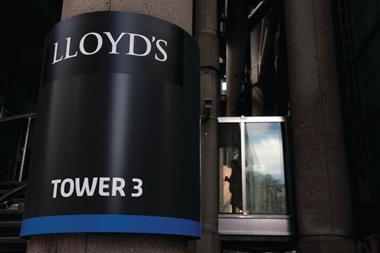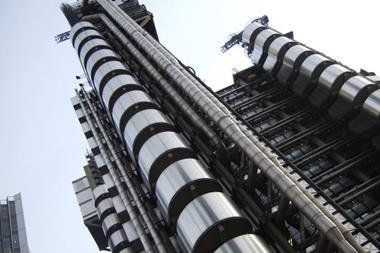Lloyd’s chief executive refutes claims that Lloyd’s itself is responsible for entry issues
New syndicates are finding it difficult to enter Lloyd’s because of the tough market conditions, according to Lloyd’s chief executive Richard Ward.
Ward, speaking at the half-year results, refuted suggestions that Lloyd’s was making it harder for start-ups.
In 2009, Lloyd’s allowed nine new syndicates into the market with nearly £700m in capacity, but since then the number of syndicates entering Lloyd’s has dwindled. This year, only three syndicates have started up.
Ward said: “The market is impacting the ability of new entrants to come in, rather than us, per se. It has to have a reasonable chance of making a profit, and as profits are squeezed, it is more difficult for somebody to demonstrate that to us.”
Lloyd’s made a pre-tax loss of £697m in the first half of 2011, compared with a £628m profit in the same period last year.

Despite the rising claims, Ward said he didn’t expect the catastrophes to trigger a return to the hard market, explaining that there was $65bn of excess capital waiting to be deployed into underwriting.
Lloyd’s said its result followed the “costliest first six months on record for major catastrophes for the insurance industry” – which incurred £6.7bn in claims. The corporation added that 2011 was likely to be the second-most costly year ever for insurers.
But there is a wide acceptance that Lloyd’s has held up pretty well under the pressure of large claims, in addition to the market turmoil engulfing the eurozone.
The central fund has not been tapped, all claims were paid out in a timely manner and there is little or no exposure to peripheral eurozone debt.
Rating agency Standard & Poor’s said Lloyd’s was heading for a 105% combined operating ratio, if there were no more major catastrophes.
“The more recent success of the Corporation is evidence of the effectiveness of increasingly robust performance, risk-monitoring processes, tools and benchmarks against which managing agents are assessed,” the agency said.
Lloyd’s UK motor insurers endured a difficult 2010, largely due to heavy losses from Equity Red Star. Finance director Luke Savage insisted that 2011 showed the motor market was back on even keel.
Prior-year reserve releases improved Lloyd’s 113.3% first-half combined ratio by 5.5 points. Savage attributed the greater contribution from reserve releases to the lack of reserve strengthening for UK motor in the first half of this year.
“If you look back to the first half of 2010, the Lloyd’s market, together with the rest of the UK motor market, was posting very significant reserve strengthening in respect of the problems coming out of claims forming and referral fees and so on,” Savage said.
“The UK motor sector within the Lloyd’s market appears to have stabilised. We took the pain last year in one big bite.
“I get the impression that other parts of the UK motor industry have been taking it in several smaller chunks because some of them are still reporting deterioration.”
We say …
• Lloyd’s has performed well following a very difficult first-half period of losses. It has a strong capital base, diversity in the types of insurance it writes and investments that have stood strong.
• The reputation of one of the world’s most trusted insurance brands requires the market to be seen as fair and transparent. Allowing brokers to take over as managing agents risks blurring the lines between underwriter and intermediary. Conflicts of interest are likely to arise.
• Two-thirds of Lloyd’s business comes from the UK and America. It needs to expand into Europe and Asia.






































No comments yet